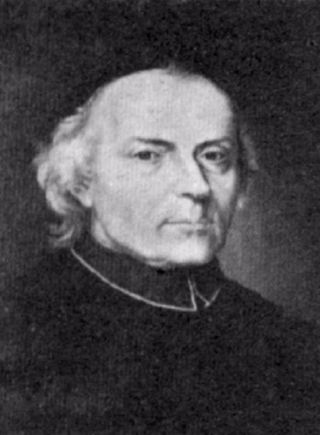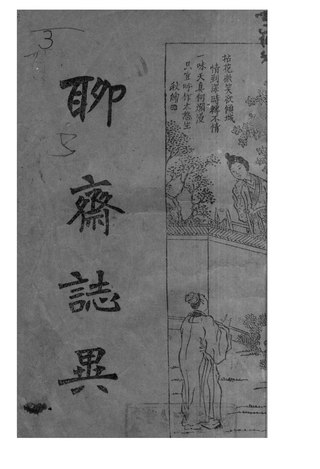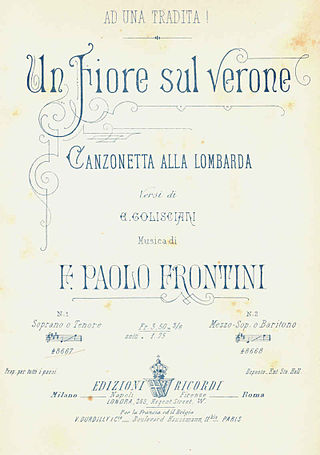Related Research Articles

Grazia Maria Cosima Damiana Deledda was an Italian writer who received the Nobel Prize for Literature in 1926 "for her idealistically inspired writings which with plastic clarity picture the life on her native island [i.e. Sardinia] and with depth and sympathy deal with human problems in general". She was the first Italian woman to receive the prize, and only the second woman in general after Selma Lagerlöf was awarded hers in 1909.

Droit du seigneur, also known as jus primae noctis or prima nocta, was a supposed legal right in medieval Europe, allowing feudal lords to have sexual relations with any female subject, particularly on her wedding night.

Ludovico Maria Sforza, also known as Ludovico il Moro, and called the "arbiter of Italy" by historian Francesco Guicciardini, was an Italian nobleman who ruled as the Duke of Milan from 1494 to 1499.

Lodovico Antonio Muratori was an Italian Catholic priest, notable as historian and a leading scholar of his age, and for his discovery of the Muratorian fragment, the earliest known list of New Testament books.

LodovicoZacconi was an Italian composer and musical theorist of the late Renaissance and early Baroque eras. He worked as a singer, theologian, and writer on music in northern Italy and Austria; for a time he was in the employ of Archduke Karl of Graz, and worked in Graz and Vienna.

Liaozhai zhiyi, sometimes shortened to Liaozhai, known in English as Strange Tales from a Chinese Studio, Strange Stories from a Chinese Studio, Strange Tales from Make-Do Studio, or literally Strange Tales from a Studio of Leisure, is a collection of Classical Chinese stories by Qing dynasty writer Pu Songling, comprising close to 500 stories or "marvel tales" in the zhiguai and chuanqi styles, which according to some critics, served to implicitly criticise societal problems. Written over a period of forty years from the late 1600s and ending in the early 1700s, it circulated in manuscripts that were copied and recopied among the author's friends but did not appear in print until 1766. Since then, many of the critically lauded stories have been adapted for other media such as film and television.

Benedetto Croce, OCI, COSML was an Italian idealist philosopher, historian, and politician who wrote on numerous topics, including philosophy, history, historiography, and aesthetics. A political liberal in most regards, he formulated a distinction between liberalism and "liberism". Croce had considerable influence on other Italian intellectuals, from Marxists to Italian fascists, such as Antonio Gramsci and Giovanni Gentile, respectively.

Alberto Pincherle, known by his pseudonym Alberto Moravia, was an Italian novelist and journalist. His novels explored matters of modern sexuality, social alienation and existentialism. Moravia is best known for his debut novel Gli indifferenti and for the anti-fascist novel Il conformista, the basis for the film The Conformist (1970) directed by Bernardo Bertolucci. Other novels of his adapted for the cinema are Agostino, filmed with the same title by Mauro Bolognini in 1962; Il disprezzo, filmed by Jean-Luc Godard as Le Mépris ; La noia (Boredom), filmed with that title by Damiano Damiani in 1963 and released in the US as The Empty Canvas in 1964 and La ciociara, filmed by Vittorio De Sica as Two Women (1960). Cédric Kahn's L'Ennui (1998) is another version of La noia.

Ludovico di Varthema, also known as Barthema and Vertomannus, was an Italian traveller, diarist and aristocrat known for being one of the first non-Muslim Europeans to enter Mecca as a pilgrim. Nearly everything that is known about his life comes from his own account of his travels, Itinerario de Ludouico de Varthema Bolognese, published in Rome in 1510.

Fernando Sorrentino is an Argentine writer. His works have been translated into English, Portuguese, Italian, German, French, Finnish, Hungarian, Polish, Bulgarian, Chinese, Vietnamese, Tamil, Kannada, Persian and Kabyle.

Piero Camporesi was an Italian historian of literature and an anthropologist. He was a professor of Italian literature at the University of Bologna.

The Strega Prize is the most important Italian literary award. It has been awarded annually since 1947 for the best work of prose fiction written in the Italian language by an author of any nationality and first published between 1 May of the previous year and 30 April.
Migliorismo was a tendency within the Italian Communist Party (PCI). Its founder and first leader was Giorgio Amendola, and it counted among its members the likes of Gerardo Chiaromonte, Emanuele Macaluso, and Giorgio Napolitano. Napolitano went on to became the longest-serving and longest-lived president in the history of the Italian Republic, as well as the first president of Italy to have been a former PCI member. Due to the relatively moderate and reformist views of its adherents, it was referred to as the right-wing of the PCI. Apart from Amendola, Chiaromonte, Macaluso, and Napolitano, other notable miglioristi included Nilde Iotti, Giancarlo Pajetta, and Luciano Lama. After the death of Amendola in 1980, Napolitano became its main leader.

Enrico Golisciani was an Italian author, born in Naples. He is best known for his opera librettos, but also published a slim volume of verses for music, entitled Pagine d'Album ; many more of his poems intended to be set to music were published in the Gazzetta Musicale di Milano.

Frate Atanasiu di Iaci or Athanasiu da Jaci was a Benedictine monk and historiographer from Aci. He wrote Vinuta di lu re Japicu in Catania (c.1295), a Sicilian chronicle of the arrival and stay of James I in Catania in May 1287. He may also be the author of another Sicilian history, Lu rebellamentu di Sichilia, written circa 1290, by an anonymous person of Messina. Vincenzo di Giovanni suggested that Atanasiu was of Saracen ancestry.

The art collections of Fondazione Cariplo are a gallery of artworks with a significant historical and artistic value owned by Fondazione Cariplo in Italy. It consists of 767 paintings, 116 sculptures, 51 objects and furnishings dating from the first century AD to the second half of the twentieth.

Giovanni Battista Niccolini was an Italian poet and playwright of the Italian unification movement or Risorgimento.

Ludovico Valenti was an Italian nobleman, ecclesiastical lawyer, papal bureaucrat, Cardinal, and Bishop of Rimini.
Professor Attilio Lavagna was born in Cagliari on 13 November 1872 to Carlo and Virginia Thorosano. He lived most of his life in the Italian region of Piedmont. He was appointed advisor of the Italian government under the Giovanni Giolitti government (1920–1921) and counselor in the Italian Supreme Court.
Lodovico Sergardi was an Italian Roman Catholic priest and poet, chiefly known for his vivid latin satires against the jurist Giovanni Vincenzo Gravina, models of composition, which for nearly a decade kept the Roman public in an uproar. Sergardi's satires were an influence on Parini's Il giorno.
References
- 1 2 "An Italian among Chinese Elite: Ludovico Nicola di Giura (1868-1947)". Mobility and Humanities (in Italian). 2022-01-17. Retrieved 2022-04-20.
- 1 2 Marinelli, M. (2011). "Finding the Imagined Motherland in China: the Italian experience in Tianjin". Provincial China. 3. doi: 10.5130/PC.V3I1.2443 . hdl: 10453/19054 . S2CID 54598736.
- ↑ Lanciotti, L. (1955). "Review of I racconti fantastici di Liao". Revue Bibliographique de Sinologie. 1: 142. ISSN 0080-2484. JSTOR 24598138.
- ↑ Lévy, André (2003). "4. The Liaozhai zhiyi and Honglou meng in French Translation". In Chan, Tak-hung Leo (ed.). One Into Many: Translation and the Dissemination of Classical Chinese Literature. Amsterdam: Rodopi. p. 83. ISBN 90-420-0815-6.
- ↑ Ming Qing Yanjiu. Dipartimento di Studi Asiatici, Istituto Universitario Orientale. 1993. p. 79.
- ↑ Antonelli, Loredana (2010). "Ludovico Nicola di Giura. Storia di un medico italiano in Cina: gli incarichi pubblici e le passioni letterarie". In Tamburello, Adolfo (ed.). Oriente, Occidente e dintorni ...: scritti in onore di Adolfo Tamburello (PDF) (in Italian). Naples: Università degli studi di Napoli l'Orientale. pp. 69–88. ISBN 978-88-95044-66-8.
- ↑ Lanciotti, Lionello (2003). "Review of Der Fuchs in Kultur, Religion und Folklore Zentral- und Ostasiens". East and West (in Italian). 53 (1/4): 310. ISSN 0012-8376. JSTOR 29757588.
- ↑ "Museo archeoantropologico "Lodovico Nicola di Giura" di Chiaromonte". Basilicata Turistica (in Italian). Archived from the original on 27 March 2022. Retrieved 27 March 2022.